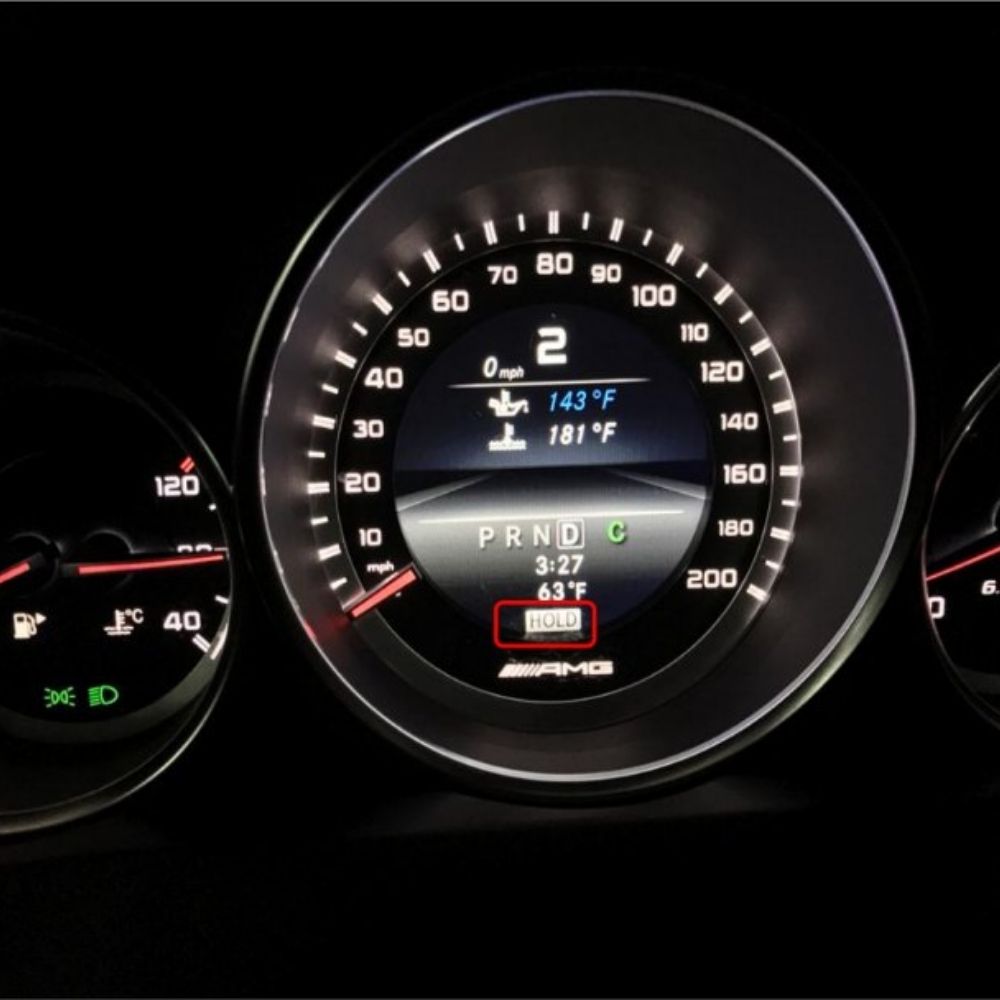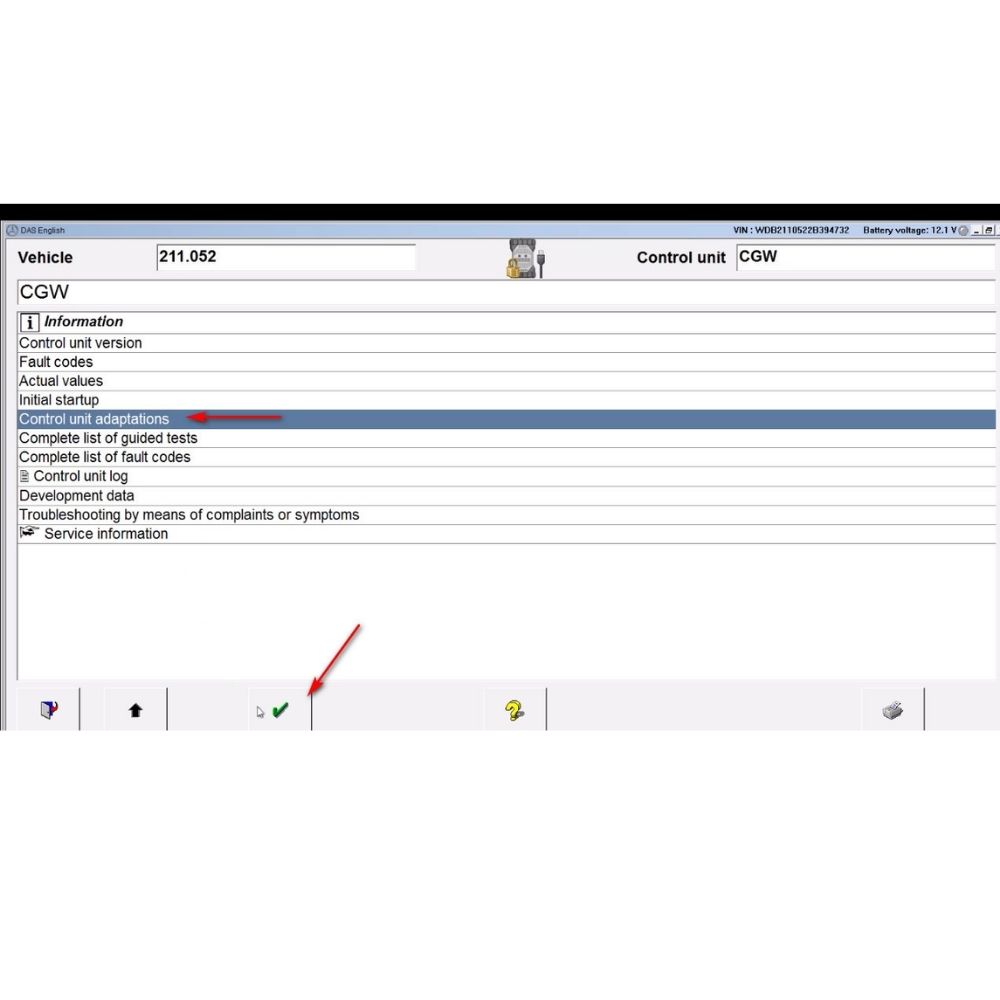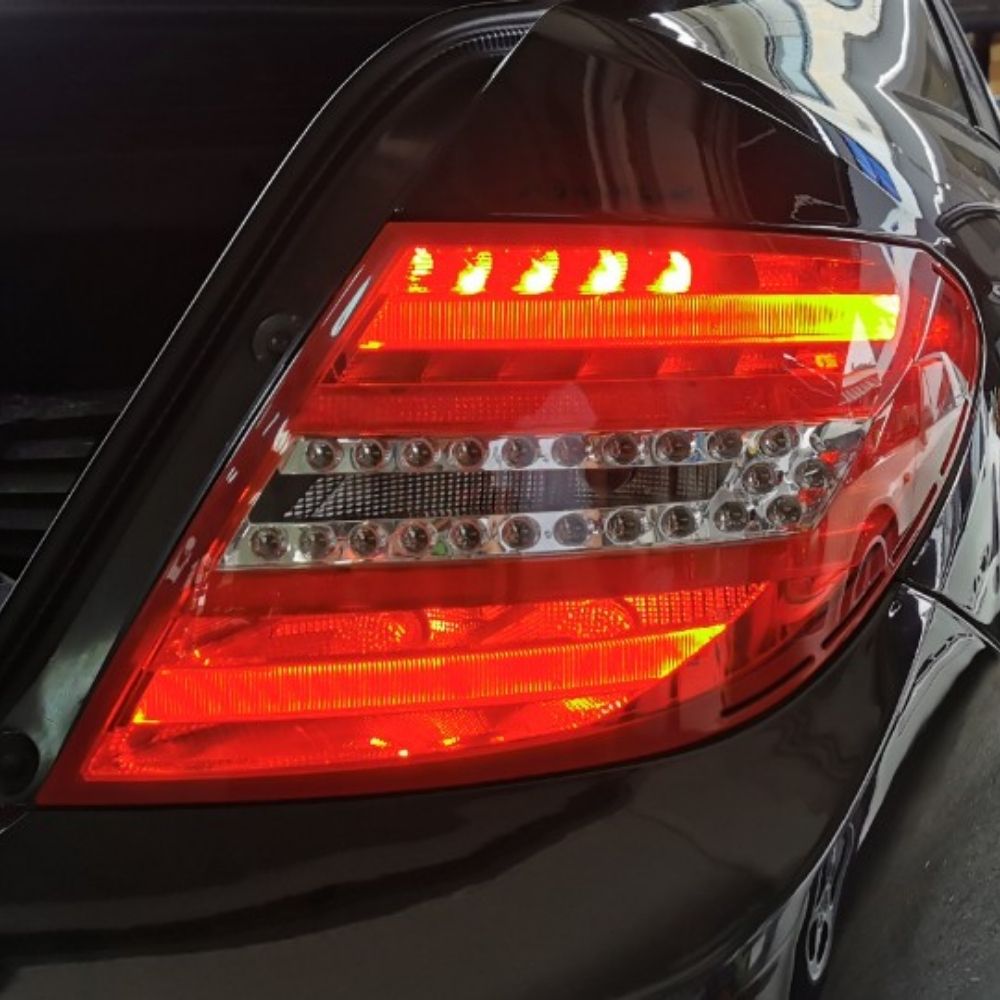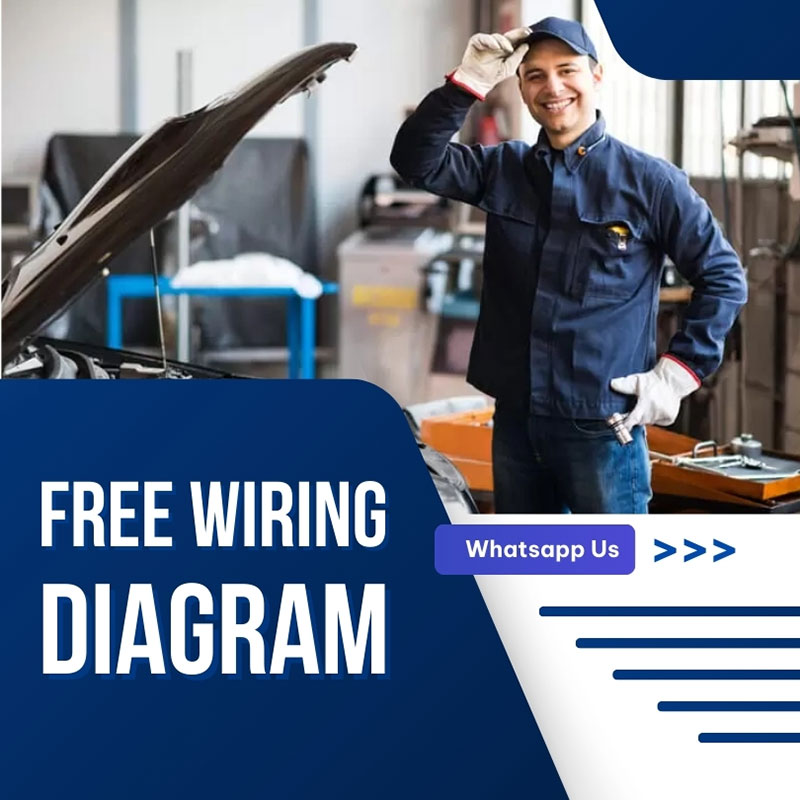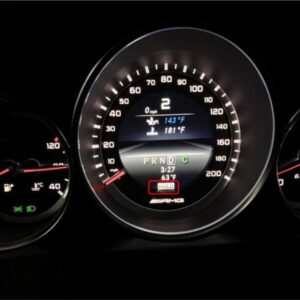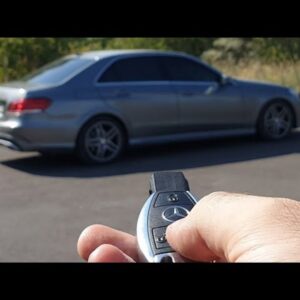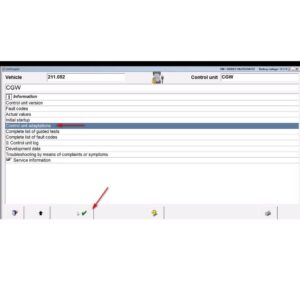AutoExplain.com delves into the intricacies of the D10B Mercedes fault code, providing in-depth analysis and solutions for this communication error. Our comprehensive guide offers expert insights into troubleshooting, diagnostics, and repairs, ensuring optimal vehicle performance and reliability while exploring related CAN bus issues and module communication problems.
1. Understanding the D10B Mercedes Fault Code
The D10B Mercedes fault code indicates a ‘No CAN message received from the engine management control unit’ error. This signifies a breakdown in communication between the engine control unit (ECU) and other modules within the vehicle’s Controller Area Network (CAN) bus system. The CAN bus is essentially the central nervous system of the car, allowing various electronic control units (ECUs) to communicate and share data. When the ECU, which manages critical engine functions, fails to transmit messages, it can trigger a cascade of problems affecting multiple systems.
Alt text: Mercedes ECU unit responsible for engine control and CAN communication
1.1. Common Symptoms Associated with D10B
- Engine Cranking Issues: The engine may fail to start or crank intermittently.
- Cooling Fan Activation: The electric cooling fan may run at maximum speed even when the engine is cold.
- Warning Lights: Various warning lights on the dashboard may illuminate, such as the check engine light, ABS light, or transmission warning light.
- Transmission Problems: Shifting issues or transmission malfunctions may occur.
- Loss of Power: The vehicle may experience a noticeable decrease in engine power or acceleration.
- Module Communication Errors: Other modules may report errors related to missing CAN messages from the ECU.
1.2. Potential Causes of the D10B Fault Code
- ECU Malfunction: The ECU itself may be faulty or experiencing internal issues.
- CAN Bus Problems: The CAN bus wiring may be damaged, corroded, or disconnected.
- Wiring Issues: Problems within the vehicle’s wiring harness, such as shorts, open circuits, or loose connections, can disrupt communication.
- Power Supply Issues: Insufficient or unstable power supply to the ECU can cause communication failures.
- Software Glitches: Software errors or corrupt data within the ECU can lead to communication problems.
- Connector Problems: Corroded or loose connectors on the ECU or other modules can interrupt the CAN bus communication.
- Faulty Sensors: Defective sensors providing incorrect data to the ECU can trigger communication errors.
- External Interference: Electromagnetic interference (EMI) from aftermarket electronics or other sources can disrupt CAN bus communication.
2. Comprehensive Diagnostic Steps for D10B Mercedes Fault Code
Diagnosing the D10B fault code requires a systematic approach to pinpoint the root cause. These steps, provided by AutoExplain.com, will guide you through the process.
2.1. Preliminary Checks
Before diving into complex diagnostics, perform these basic checks:
- Battery Voltage: Ensure the battery is fully charged and in good condition. Low voltage can cause erratic electronic behavior.
- Fuses: Check all relevant fuses related to the ECU and CAN bus system. Replace any blown fuses.
- Wiring and Connectors: Inspect the wiring harness and connectors for any visible damage, corrosion, or loose connections. Pay close attention to the ECU connectors.
2.2. Scan Tool Diagnostics
Use a Mercedes-Benz compatible scan tool to retrieve detailed fault codes from all modules. Record all codes present, even if they seem unrelated to the D10B fault.
- Read and Clear Codes: Read all stored fault codes and clear them.
- Re-scan: After clearing, re-scan the system to see which codes return. This helps identify the most persistent and relevant issues.
- Live Data: Monitor live data from the ECU, such as engine speed, sensor readings, and CAN bus communication status. Look for any anomalies or inconsistencies.
2.3. CAN Bus Testing
Testing the CAN bus is crucial to identify communication issues.
- CAN Bus Voltage: Use a multimeter to measure the voltage between the CAN High and CAN Low wires. The expected voltage is typically around 2.5 volts. Deviations from this value can indicate a problem.
- Resistance Test: With the ignition off, measure the resistance between the CAN High and CAN Low wires. The resistance should be approximately 60 ohms. A significantly different reading suggests a short circuit or open circuit in the CAN bus.
- Oscilloscope Analysis: Use an oscilloscope to analyze the CAN bus signal waveforms. This can reveal signal distortion, noise, or other anomalies that may be causing communication problems.
Alt text: CAN bus wiring diagram showing high and low lines connecting different modules
2.4. ECU Inspection and Testing
If the CAN bus tests appear normal, the issue may lie within the ECU itself.
- Visual Inspection: Carefully inspect the ECU for any signs of physical damage, such as burnt components, corrosion, or water intrusion.
- Power and Ground: Verify that the ECU is receiving proper power and ground connections. Use a multimeter to check the voltage and continuity of these circuits.
- ECU Connector Pinout: Refer to the vehicle’s wiring diagram and check the ECU connector pinout for any discrepancies or damage.
- ECU Testing: If possible, test the ECU on a bench using a specialized ECU tester. This can help determine if the ECU is functioning correctly.
2.5. Component Testing
Test components that interact with the ECU, such as sensors and actuators.
- Sensor Testing: Use a multimeter or scan tool to test the functionality of critical sensors, such as the crankshaft position sensor, camshaft position sensor, and mass airflow sensor.
- Actuator Testing: Verify the operation of actuators, such as the throttle body, fuel injectors, and ignition coils.
- Wiring to Components: Check the wiring and connectors to these components for any damage or corrosion.
2.6. Module Communication Testing
Determine which modules are failing to communicate with the ECU.
- Module Status: Use a scan tool to check the status of each module on the CAN bus. Identify any modules that are not responding or reporting communication errors.
- Wiring Between Modules: Inspect the wiring and connectors between the ECU and the affected modules. Look for any signs of damage or corrosion.
- Module Replacement: As a last resort, try replacing the affected module with a known good unit to see if the communication issue is resolved.
3. Detailed Repair Procedures for D10B Mercedes Fault Code
Based on the diagnostic findings, follow these detailed repair procedures to address the D10B fault code.
3.1. CAN Bus Wiring Repair
If the CAN bus wiring is damaged or corroded, repair or replace the affected sections.
- Wiring Repair: Use proper splicing techniques to repair damaged wires. Ensure the connections are secure and well-insulated.
- Connector Replacement: Replace corroded or damaged connectors with new ones. Use dielectric grease to protect the connections from future corrosion.
- Harness Replacement: In severe cases, replace the entire wiring harness section that contains the damaged CAN bus wires.
3.2. ECU Repair or Replacement
If the ECU is found to be faulty, it may need to be repaired or replaced.
- ECU Repair: If the ECU has minor damage, such as a burnt component, it may be possible to repair it. However, this should only be done by a qualified technician with experience in ECU repair.
- ECU Replacement: If the ECU is severely damaged or beyond repair, it will need to be replaced. Ensure that the replacement ECU is properly programmed and coded to the vehicle.
- ECU Programming: After replacing the ECU, it is essential to program it with the correct software and coding. This can be done using a Mercedes-Benz compatible scan tool or through AutoExplain.com’s remote programming services.
3.3. Wiring and Connector Repair
Address any issues with the vehicle’s wiring and connectors.
- Wiring Repair: Repair any damaged wires using proper splicing techniques. Ensure the connections are secure and well-insulated.
- Connector Cleaning: Clean corroded connectors with a wire brush and electrical contact cleaner. Apply dielectric grease to protect the connections from future corrosion.
- Connector Replacement: Replace damaged or corroded connectors with new ones.
3.4. Power Supply Correction
Ensure the ECU is receiving a stable and adequate power supply.
- Voltage Check: Verify that the ECU is receiving the correct voltage. If the voltage is low, check the battery, alternator, and wiring for any issues.
- Ground Check: Ensure that the ECU has a good ground connection. Clean and tighten any ground connections that are loose or corroded.
- Wiring Repair: Repair any damaged wiring that is affecting the power supply to the ECU.
3.5. Software Update and Reset
Update the ECU software to the latest version and perform a system reset.
- Software Update: Use a Mercedes-Benz compatible scan tool to update the ECU software to the latest version. This can resolve software glitches and improve communication stability.
- System Reset: Perform a system reset to clear any stored data and reset the ECU to its default settings.
Alt text: Mercedes diagnostic tool used to read and clear fault codes
4. Advanced Troubleshooting Techniques
For complex cases, consider these advanced troubleshooting techniques.
4.1. CAN Bus Load Testing
Test the CAN bus load to identify modules that are drawing excessive current.
- Current Measurement: Use an ammeter to measure the current draw of each module on the CAN bus. Compare the readings to the manufacturer’s specifications.
- Module Isolation: Disconnect modules one at a time to see if the CAN bus load returns to normal. This can help identify the module that is causing the problem.
4.2. Noise Filtering
Implement noise filtering techniques to reduce electromagnetic interference (EMI) on the CAN bus.
- Shielded Wiring: Use shielded wiring to protect the CAN bus wires from EMI.
- Ferrite Beads: Install ferrite beads on the CAN bus wires to filter out high-frequency noise.
- Grounding: Ensure that all modules and components are properly grounded to minimize EMI.
4.3. Data Logging
Use a data logger to record CAN bus traffic and analyze communication patterns.
- CAN Bus Data: Record CAN bus data for an extended period to capture intermittent communication errors.
- Data Analysis: Analyze the recorded data to identify patterns, anomalies, and specific messages that are causing problems.
5. Preventing Future Occurrences
To prevent the D10B fault code from recurring, implement these preventative measures.
5.1. Regular Maintenance
Perform regular maintenance on the vehicle’s electrical system.
- Battery Maintenance: Keep the battery terminals clean and tight. Regularly check the battery voltage and replace the battery when necessary.
- Wiring Inspection: Inspect the wiring harness and connectors for any signs of damage or corrosion.
- Connector Cleaning: Clean corroded connectors with a wire brush and electrical contact cleaner. Apply dielectric grease to protect the connections from future corrosion.
5.2. Software Updates
Keep the ECU software up to date with the latest versions.
- Software Updates: Regularly check for software updates for the ECU and other modules.
- Installation: Install the updates using a Mercedes-Benz compatible scan tool or through AutoExplain.com’s remote programming services.
5.3. Proper Installation of Aftermarket Electronics
Ensure that any aftermarket electronics are installed correctly and do not interfere with the CAN bus system.
- Professional Installation: Have aftermarket electronics installed by a qualified technician.
- Wiring: Ensure that the wiring for aftermarket electronics is properly routed and shielded to prevent EMI.
- Compatibility: Verify that aftermarket electronics are compatible with the vehicle’s CAN bus system.
6. Related Fault Codes and Issues
Several other fault codes and issues can be related to the D10B fault code. Understanding these can aid in a more comprehensive diagnosis.
6.1. C100 – No CAN Message Received From Engine Management Control Unit
This code is similar to D10B and often appears alongside it, indicating a general communication failure from the ECU.
6.2. 4759 – No CAN Message Received From Engine Control Module (ABR)
This code indicates that the Adaptive Brake (ABR) module is not receiving CAN messages from the engine control module, which can affect braking performance.
6.3. 4840 – No CAN Message Received From Engine Control Module (ABR)
Similar to 4759, this code also points to a communication issue between the ABR module and the engine control module.
6.4. 9040 – Component N10/1kO (Fan Relay Module) Is Defective or Not Installed (Driver’s SAM)
This code suggests a problem with the fan relay module, which may be related to the cooling fan running at maximum speed.
6.5. 9090 – Fault in CAN Communication With Control Unit OCP (Driver’s SAM)
This code indicates a communication fault with the Overhead Control Panel (OCP), which can affect various functions such as lighting and sunroof operation.
6.6. 9348 – No CAN Message Received From Engine Control Module (SCM/MRM)
This code indicates that the Steering Control Module (SCM) or Multi-function Radar Module (MRM) is not receiving CAN messages from the engine control module.
6.7. 5024/5025 – Fault in CAN Communication With Control Unit ME Motor Electronics (RecETR-LF/RF)
These codes indicate communication faults with the Motor Electronics (ME) control unit related to the Reversible Emergency Tensioning Retractor (RecETR) for the left and right front seats.
6.8. 9204 – Control Unit ASSYST Is Not Receiving Any Messages From the Engine Compartment CAN Bus
This code indicates that the Active Service System (ASSYST) is not receiving messages from the engine compartment CAN bus, which can affect service interval calculations.
7. Common Rail Diesel Injection (CDI) Faults
Issues with the Common Rail Diesel Injection (CDI) system can sometimes be related to CAN bus communication problems.
7.1. 2513-1 Component M55 (Inlet Port Shutoff Motor); Positioner Signals Fault
This code indicates a problem with the inlet port shutoff motor, which can affect engine performance.
7.2. 2531-2 Component M55; Positioner Signals Fault Y
Similar to 2513-1, this code also points to a fault with the inlet port shutoff motor.
7.3. 2520-1 Component R48/1 (Thermostat); Short Circuit to Positive
This code indicates a short circuit to positive in the thermostat, which can affect engine temperature regulation.
7.4. 2502-2 Component R48/1; Short Circuit to Ground
This code indicates a short circuit to ground in the thermostat.
7.5. 2520-4 Component R48/1; Signal Line Is Interrupted
This code indicates an interruption in the signal line to the thermostat.
7.6. 2520-8 Component R48/1; Thermal Overload of Control Module N3/9 (CDI Control Unit)
This code indicates a thermal overload of the CDI control unit, which can cause communication problems and other issues.
Alt text: Mercedes thermostat, component R48/1, prone to electrical faults
8. Real-World Case Studies
Understanding real-world examples can provide valuable insights into diagnosing and resolving the D10B fault code.
8.1. Case Study 1: E320 CDI No Start Issue
A 2008 Mercedes-Benz E320 CDI with 75,000 miles exhibited a no-start condition. The engine would not crank, and the cooling fan activated at maximum speed when the key was left in the “On” position. Diagnostic scans revealed the D10B fault code along with other CAN communication errors.
- Diagnosis: The initial checks revealed a fully charged battery and no blown fuses. CAN bus testing showed abnormal voltage readings, indicating a problem with the CAN bus wiring.
- Solution: Upon closer inspection, corroded CAN bus wires were found near the ECU. The damaged wires were repaired, and the connectors were cleaned and protected with dielectric grease. After the repairs, the engine started normally, and the fault codes were cleared.
8.2. Case Study 2: Intermittent Transmission Problems
A 2012 Mercedes-Benz C250 experienced intermittent transmission problems, including harsh shifting and occasional failure to shift. The diagnostic scan revealed the D10B fault code along with transmission-related codes.
- Diagnosis: The preliminary checks were normal. CAN bus testing showed no immediate issues. However, monitoring live data from the ECU revealed intermittent drops in CAN bus communication.
- Solution: The ECU was inspected for physical damage, and the connectors were checked for corrosion. A loose connection was found at the ECU connector. The connector was secured, and the ECU was reprogrammed with the latest software. The transmission problems were resolved, and the fault codes were cleared.
8.3. Case Study 3: Multiple Warning Lights and Loss of Power
A 2015 Mercedes-Benz GLK350 displayed multiple warning lights on the dashboard and experienced a noticeable loss of power. The diagnostic scan revealed the D10B fault code along with ABS and traction control codes.
- Diagnosis: The initial checks revealed no obvious issues. CAN bus testing showed normal voltage and resistance readings. However, further investigation revealed a faulty crankshaft position sensor.
- Solution: The crankshaft position sensor was replaced with a new unit. The fault codes were cleared, and the vehicle’s performance returned to normal.
9. Tools and Equipment Needed
Having the right tools and equipment is essential for diagnosing and repairing the D10B fault code.
- Mercedes-Benz Compatible Scan Tool: A scan tool capable of reading and clearing fault codes from all modules.
- Multimeter: For measuring voltage, resistance, and continuity.
- Oscilloscope: For analyzing CAN bus signal waveforms.
- Wiring Repair Kit: Including wire strippers, crimpers, soldering iron, and heat shrink tubing.
- Connector Cleaning Tools: Including wire brush and electrical contact cleaner.
- Dielectric Grease: For protecting electrical connections from corrosion.
- ECU Tester: For testing the functionality of the ECU.
- Data Logger: For recording CAN bus traffic and analyzing communication patterns.
10. AutoExplain.com: Your Partner in Mercedes-Benz Diagnostics
At AutoExplain.com, we understand the complexities of modern automotive diagnostics. Our team of expert technicians is available to provide remote support and guidance for diagnosing and repairing the D10B Mercedes fault code.
- Remote Diagnostics: We offer remote diagnostic services using advanced scan tools and diagnostic software.
- Programming and Coding: We can remotely program and code ECUs and other modules.
- Technical Support: Our team is available to provide technical support and guidance via WhatsApp, email, or phone.
- Expert Advice: We can provide expert advice on troubleshooting and repairing complex automotive issues.
11. The Importance of Accurate Diagnostics
Accurate diagnostics are crucial for resolving the D10B fault code effectively. Guesswork and shotgun repairs can lead to wasted time, money, and frustration. By following a systematic diagnostic approach, you can pinpoint the root cause of the problem and implement the correct repair.
11.1. Avoiding Unnecessary Repairs
Accurate diagnostics help avoid unnecessary repairs by identifying the actual source of the problem. This saves time and money by preventing the replacement of functioning components.
11.2. Ensuring Long-Term Reliability
By addressing the root cause of the D10B fault code, accurate diagnostics ensure long-term reliability. This prevents the problem from recurring and causing further damage to the vehicle.
11.3. Improving Vehicle Performance
Resolving the D10B fault code through accurate diagnostics can improve vehicle performance by restoring proper communication between modules. This can result in smoother shifting, better fuel economy, and improved overall driving experience.
12. Navigating the CAN Bus System
The CAN bus system is a complex network that requires a thorough understanding for effective diagnostics.
12.1. CAN Bus Architecture
The CAN bus system consists of two wires, CAN High and CAN Low, that connect various modules throughout the vehicle. These modules communicate by sending and receiving messages over the CAN bus.
12.2. Message Prioritization
Messages on the CAN bus are prioritized to ensure that critical information is transmitted first. This is important for safety-related systems such as ABS and airbags.
12.3. Error Handling
The CAN bus system has built-in error handling mechanisms to detect and correct communication errors. This helps ensure the integrity of the data being transmitted.
13. Understanding Module Communication
Effective module communication is essential for the proper operation of modern vehicles.
13.1. ECU (Engine Control Unit)
The ECU is the central control unit for the engine. It receives data from various sensors and controls actuators to optimize engine performance.
13.2. TCM (Transmission Control Module)
The TCM controls the transmission and ensures smooth shifting. It communicates with the ECU to coordinate engine and transmission operation.
13.3. ABS (Anti-lock Braking System)
The ABS module prevents the wheels from locking up during braking. It communicates with the ECU to coordinate braking and engine control.
13.4. BCM (Body Control Module)
The BCM controls various body functions such as lighting, windows, and door locks. It communicates with other modules to coordinate these functions.
14. How AutoExplain.com Can Help
AutoExplain.com offers a range of services to help you diagnose and repair the D10B Mercedes fault code.
14.1. Remote Diagnostics
Our remote diagnostic services allow you to connect with our expert technicians remotely. We can read and clear fault codes, monitor live data, and provide guidance on troubleshooting the problem.
14.2. Programming and Coding
We can remotely program and code ECUs and other modules to ensure they are functioning correctly. This is essential after replacing a module or updating software.
14.3. Technical Support
Our team is available to provide technical support and guidance via WhatsApp, email, or phone. We can answer your questions and help you troubleshoot complex automotive issues.
14.4. Expert Advice
We can provide expert advice on diagnosing and repairing the D10B fault code. Our team has years of experience working with Mercedes-Benz vehicles and can provide valuable insights into the problem.
15. Common Questions About D10B Mercedes Fault Code
Here are some frequently asked questions about the D10B Mercedes fault code.
15.1. What Does the D10B Fault Code Mean?
The D10B fault code indicates a “No CAN message received from the engine management control unit” error. This means that the ECU is not communicating with other modules on the CAN bus.
15.2. What Are the Common Symptoms of the D10B Fault Code?
Common symptoms include engine cranking issues, cooling fan activation, warning lights, transmission problems, and loss of power.
15.3. What Are the Potential Causes of the D10B Fault Code?
Potential causes include ECU malfunction, CAN bus problems, wiring issues, power supply issues, and software glitches.
15.4. How Do I Diagnose the D10B Fault Code?
Diagnose the D10B fault code by performing preliminary checks, using a scan tool, testing the CAN bus, inspecting the ECU, testing components, and testing module communication.
15.5. How Do I Repair the D10B Fault Code?
Repair the D10B fault code by repairing or replacing CAN bus wiring, repairing or replacing the ECU, repairing wiring and connectors, correcting power supply issues, and updating software.
15.6. Can I Fix the D10B Fault Code Myself?
Fixing the D10B fault code requires specialized tools and knowledge. If you are not experienced in automotive diagnostics and repair, it is best to seek professional help.
15.7. How Can AutoExplain.com Help Me Fix the D10B Fault Code?
AutoExplain.com offers remote diagnostic services, programming and coding, technical support, and expert advice to help you diagnose and repair the D10B fault code.
15.8. What Tools and Equipment Do I Need to Diagnose and Repair the D10B Fault Code?
You need a Mercedes-Benz compatible scan tool, multimeter, oscilloscope, wiring repair kit, connector cleaning tools, dielectric grease, ECU tester, and data logger.
15.9. How Can I Prevent the D10B Fault Code From Recurring?
Prevent the D10B fault code from recurring by performing regular maintenance, keeping software up to date, and ensuring proper installation of aftermarket electronics.
15.10. What Are Some Related Fault Codes and Issues?
Related fault codes and issues include C100, 4759, 4840, 9040, 9090, 9348, 5024, 5025, 9204, and various CDI faults.
16. Contact AutoExplain.com for Expert Assistance
If you are experiencing the D10B Mercedes fault code or any other automotive issues, don’t hesitate to contact AutoExplain.com for expert assistance. Our team of experienced technicians is ready to help you diagnose and repair your vehicle quickly and efficiently.
Contact Information:
- Address: 4590 Angus Road, New York, United States
- WhatsApp: +1(936)2896695
- Email: [email protected]
- Website: AutoExplain.com
Let AutoExplain.com be your trusted partner in Mercedes-Benz diagnostics and repair. Contact us today for expert assistance and reliable solutions.
